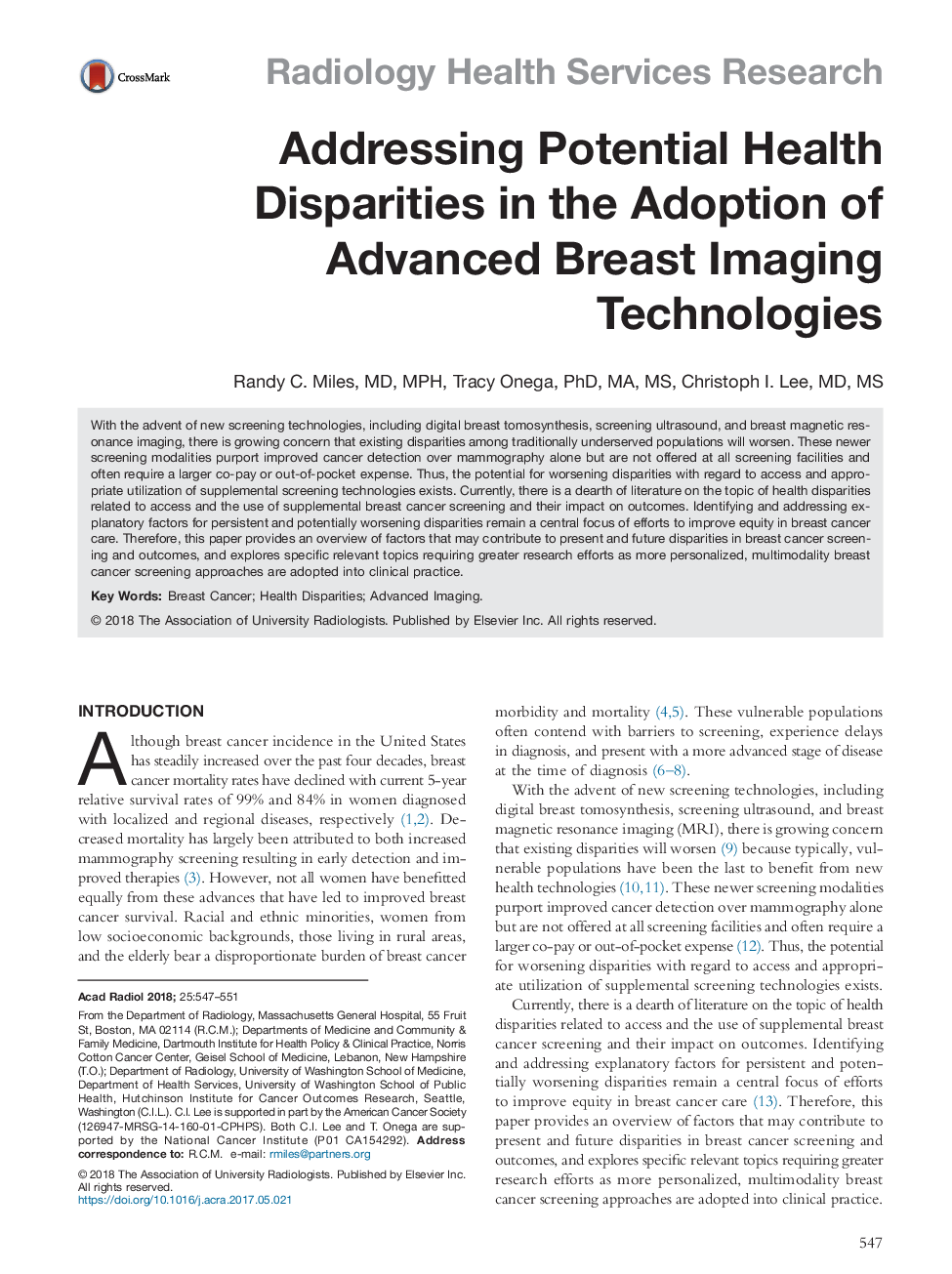| Article ID | Journal | Published Year | Pages | File Type |
|---|---|---|---|---|
| 8820930 | Academic Radiology | 2018 | 5 Pages |
Abstract
With the advent of new screening technologies, including digital breast tomosynthesis, screening ultrasound, and breast magnetic resonance imaging, there is growing concern that existing disparities among traditionally underserved populations will worsen. These newer screening modalities purport improved cancer detection over mammography alone but are not offered at all screening facilities and often require a larger co-pay or out-of-pocket expense. Thus, the potential for worsening disparities with regard to access and appropriate utilization of supplemental screening technologies exists. Currently, there is a dearth of literature on the topic of health disparities related to access and the use of supplemental breast cancer screening and their impact on outcomes. Identifying and addressing explanatory factors for persistent and potentially worsening disparities remain a central focus of efforts to improve equity in breast cancer care. Therefore, this paper provides an overview of factors that may contribute to present and future disparities in breast cancer screening and outcomes, and explores specific relevant topics requiring greater research efforts as more personalized, multimodality breast cancer screening approaches are adopted into clinical practice.
Related Topics
Health Sciences
Medicine and Dentistry
Radiology and Imaging
Authors
Randy C. MD, MPH, Tracy PhD, MA, MS, Christoph I. MD, MS,
